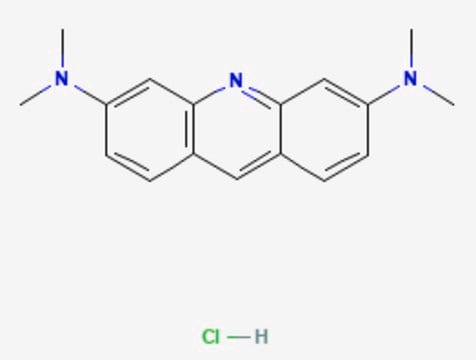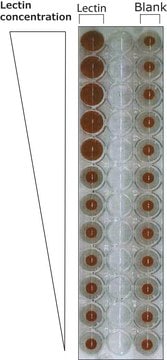A8097
Acridine Orange hydrochloride solution
>95.0% purity (HPLC), solution
Synonym(s):
3,6-Bis(dimethylamino)acridine hydrochloride
About This Item
Recommended Products
product name
Acridine Orange hydrochloride solution, ≥95.0% (HPLC), 10 mg/mL in H2O
Quality Level
Assay
≥95.0% (HPLC)
form
solution
concentration
10 mg/mL in H2O
color
orange to red
εmax
47-54 at 486-492 nm in water
application(s)
diagnostic assay manufacturing
hematology
histology
storage temp.
room temp
SMILES string
Cl[H].CN(C)c1ccc2cc3ccc(cc3nc2c1)N(C)C
InChI
1S/C17H19N3.ClH/c1-19(2)14-7-5-12-9-13-6-8-15(20(3)4)11-17(13)18-16(12)10-14;/h5-11H,1-4H3;1H
InChI key
VSTHNGLPHBTRMB-UHFFFAOYSA-N
Looking for similar products? Visit Product Comparison Guide
Application
Biochem/physiol Actions
Signal Word
Warning
Hazard Statements
Precautionary Statements
Hazard Classifications
Muta. 2
Storage Class Code
12 - Non Combustible Liquids
WGK
WGK 2
Flash Point(F)
Not applicable
Flash Point(C)
Not applicable
Personal Protective Equipment
Choose from one of the most recent versions:
Certificates of Analysis (COA)
Don't see the Right Version?
If you require a particular version, you can look up a specific certificate by the Lot or Batch number.
Already Own This Product?
Find documentation for the products that you have recently purchased in the Document Library.
Customers Also Viewed
Our team of scientists has experience in all areas of research including Life Science, Material Science, Chemical Synthesis, Chromatography, Analytical and many others.
Contact Technical Service









